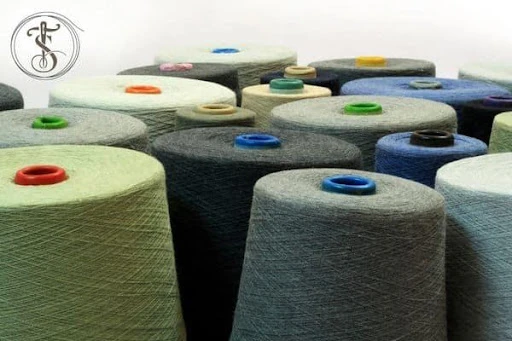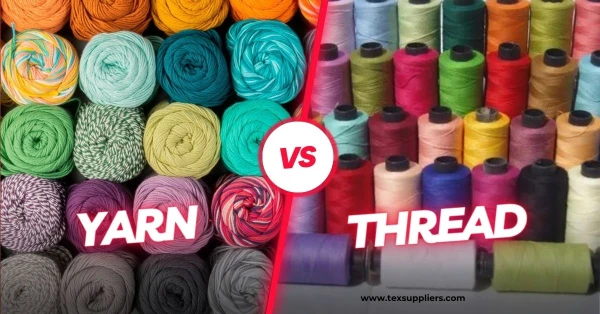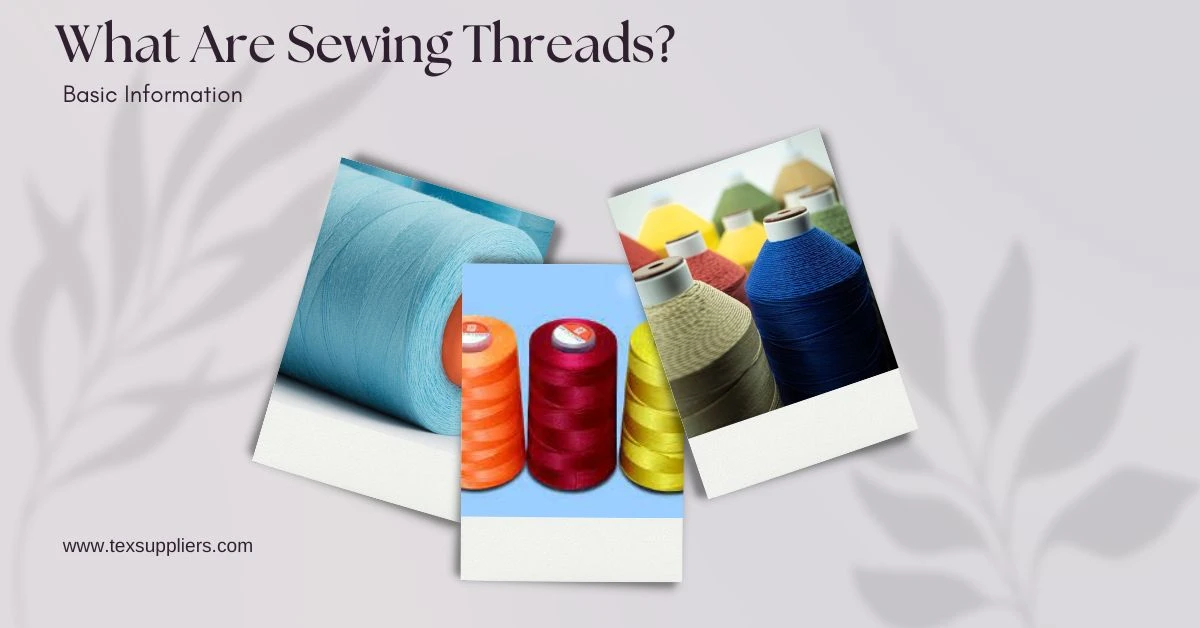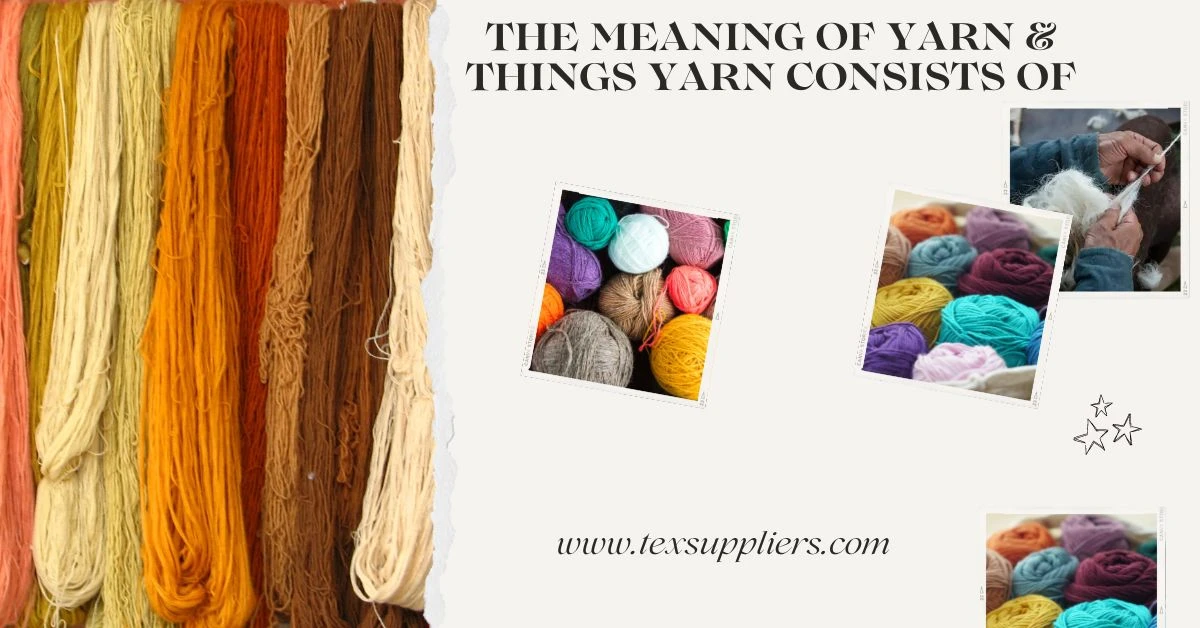You might become confused between yarn and thread because they sound like a similar meaning. But there are distinct features between yarn vs thread based on the materials, manufacturing process, and application.
All yarn is not considered a thread, but a thread is a subdivision of yarn. If we had to mention only one difference that matters to sewing garment products, we would use thread. On the other hand, to knit and weave textile-based fabric, we use yarn.
Table Of Contents
What is Yarn?
Yarn is a well-known material for being a continuous length of staple fiber or filaments used to make fabric. It has wide usage in the sector of weaving, knitting, and ropemaking. To make fabric or textile products, we use yarn. For yarn, the common materials are cotton and polyester. There are different classifications of yarns.

Mainly, yarns have two classifications:
- Staple Yarn (Spun yarn is of twisted staple fibers in an S or Z twist shaped)
- Continuous filament (Twisted fiber group together)
Besides, yarns also have two classifications based on different materials. They are:
- Monotonous Fiber Yarn (yarn that contains only one filament)
- Blended Yarn or Multifilament (yarn that contains two or more filaments)
Yarns tend to be heavier and weak in strength. Although they are heavy, they are thinner. We can find the yarns in comparatively large packages.
Materials Used for Yarn:
There are natural and artificial types of material in weaving. Natural here means wool and artificial is nylon type. Both types of material contribute to weaving and knitting.
Manufacturing Process:
Spinning: A method where there is a drawing-out phase of fibers. After that, they go through a twisting process. Filament-type yarns do not require much twist compared to staple yarns. Twisting helps to make the yarn stronger. To make ply yarn, we require more than 2 twisted strands. Weaving yarns require more twists than knitting yarns.
What is Thread?
A thin long-stranded fiber used for sewing is well-known to consider itself as thread. Depending on the typologies of threads, threads have various applications. There are threads especially for sewing, repairing, creating a distinctive pattern, and whatnot. You may have heard of embroidery threads. We use this thread in embroidery design including diversified sewing models. Such as cross-stitching, and shadow work.

Materials used for the thread are cotton, rayon, polyester, wool, and silk. They come in many colors as possible. The most interesting fact is that thread is a type of yarn. This is a twisted long strand of 2 or more yarns. Sewing is applicable for commercial and industrial use. Besides, there are hand sewing and sewing machines as well. In a thread, the twist (per inch) tends to be higher. Ply is a type of thread where there are threads twisted for only 1 strand.
Application: Only for sewing or hand stitching.
Thread applies to making leather goods and seats for automobiles. The polyester materialled thread has vast applications in clothing-like industries. Thread is like stitching clothes along with the additional merchandise.
Difference Between Yarn Vs Thread
Yarns and threads differ from each other based on different aspects like strength, thickness, softness, weight, selling type, and finally usage. That is why we have figured out the differences between yarn vs thread below:
|
The topic of the Discussion |
Yarn |
Thread |
|
Definition |
A twisted strand of staple fibers or filaments |
A long and thin strand of natural or synthetic fibers only for sewing. |
|
Weight |
Tends to be heavier compared to thread |
The thread is less heavy and lightweight. |
|
Size |
Less thin |
Comparatively thinner than yarn |
|
Applications |
Only to make fabric sheets and textiles, weaving and knitting and making thread |
Applicable for sewing or stitching products. |
|
Material |
Wool or Nylon |
Cotton or Flax. |
|
Strength |
Less strong compared to the thread |
Relatively stronger |
|
Selling |
Sells in large packages |
Sells in small packages |
|
Type |
Thread is one of the types of yarn. |
Has no such type. |
|
Crocheting |
Crochets cloths and wool-type blankets. Acrylic (synthetic) yarns are popular for being the major crochet yarn. |
Crochet threads tend to design cloths only |
|
Yarn Count |
Two types of yarn count:
|
Tex count system/ Direct Count of threads (1 length unit). |
|
Durability |
Less durable |
More durable |
Final Words
The applications of thread are less limited than yarn if we see the difference chart. Being part of the yarn, threads differ in many topics. The fabric making, the manufacturing, and the materials all contribute to making each of the yarn and thread distinct from each other. Thus, yarn and sewing have separate usages in the field of sewing, knitting, and weaving.
















Comments - 00
Leave A Reply
Thanks for choosing to leave a comment.